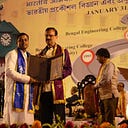Exploring Nesterov Accelerated Gradient (NAG): A Powerful Optimization Technique in Deep Learning
Introduction: In the field of deep learning, optimization algorithms play a crucial role in training neural networks effectively and efficiently. Gradient descent is the most commonly used optimization algorithm, but it often suffers from slow convergence when dealing with complex and high-dimensional data. To address this issue, researchers have developed various advanced optimization techniques, one of which is Nesterov Accelerated Gradient (NAG). In this article, we will delve into the concept of Nesterov Accelerated Gradient and provide a Python implementation for its application in training neural networks.
Understanding Nesterov Accelerated Gradient (NAG): Nesterov Accelerated Gradient, also known as Nesterov momentum or Nesterov’s accelerated gradient descent, is an optimization technique that improves upon the standard momentum method. It was introduced by Yurii Nesterov in 1983 and has gained significant attention in recent years due to its superior convergence properties.
The key idea behind NAG is to take into account the momentum term in the calculation of the gradient, by considering the future position of the parameter. Unlike standard momentum, which updates the parameters based on the current position, NAG incorporates an estimation of the future position by looking ahead. By doing so, NAG achieves faster convergence and better handling of oscillations in the loss landscape.
Implementation of Nesterov Accelerated Gradient in Python: To demonstrate the implementation of Nesterov Accelerated Gradient in Python, we will use the popular deep learning library TensorFlow. Let’s assume we have a simple neural network model defined using TensorFlow’s high-level API, Keras. Here’s how we can incorporate Nesterov Accelerated Gradient into the training process:
import tensorflow as tf
from tensorflow import keras
# Define your neural network model using Keras
model = keras.Sequential([
keras.layers.Dense(64, activation=’relu’, input_shape=(input_dim,)),
keras.layers.Dense(64, activation=’relu’),
keras.layers.Dense(num_classes, activation=’softmax’)
])
# Define your optimizer with Nesterov Accelerated Gradient
optimizer = tf.keras.optimizers.SGD(learning_rate=0.01, momentum=0.9, nesterov=True)
# Compile the model
model.compile(optimizer=optimizer, loss=’categorical_crossentropy’, metrics=[‘accuracy’])
# Train the model
model.fit(x_train, y_train, batch_size=batch_size, epochs=epochs, validation_data=(x_val, y_val))
In the code above, we first define our neural network model using the Keras API. Then, we specify the optimizer by creating an instance of the SGD optimizer and setting the nesterov parameter to True. This enables Nesterov Accelerated Gradient in the optimization process. Finally, we compile the model with the desired loss function and metrics, and train it on the training data.
By using Nesterov Accelerated Gradient, we can expect improved convergence and faster training of the neural network model, especially in scenarios where the loss landscape exhibits high curvature and sharp turns.
Conclusion: Nesterov Accelerated Gradient (NAG) is a powerful optimization technique that enhances the performance of gradient descent-based algorithms in training deep neural networks. By considering the future position of the parameters, NAG provides better convergence rates and improved handling of loss landscape irregularities. In this article, we explored the concept of Nesterov Accelerated Gradient and provided a Python implementation using TensorFlow. Incorporating NAG into your deep learning projects can help achieve faster and more efficient training, leading to better model performance.
References:
- Y. Nesterov. “A method for unconstrained convex minimization problem with the rate of convergence O(1/k²).” Soviet Mathematics Doklady, 1983.
- S. Ruder. “An overview of gradient descent optimization algorithms.” arXiv preprint arXiv:1609.04747, 2016.
- TensorFlow Documentation: https://www.tensorflow.org/api_docs
- https://aiplanet.com/blog/optimization-algorithms-in-neural-networks/
